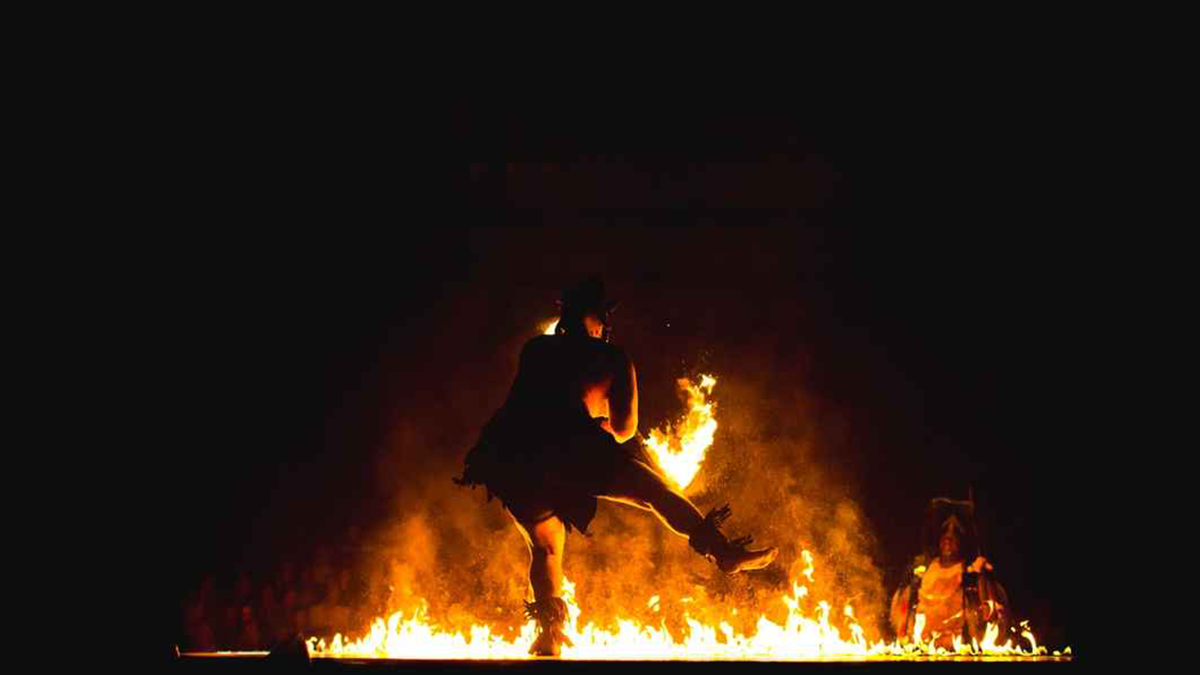Goa though the smallest state of India, but is full of surprises. One such surprise is the Gadyachi Jatra.
While most of the tourists visualize Goa a hub to beaches, mountains, waterfalls, and the architecture, but there’s more to the state that adds up to the beauty of the state. In the rural regions of Goa, there is a unique being celebrated by the villagers that expresses gratitude towards demons, ghosts, and spirits.
Interesting right?

The Gadyachi Jatra is a part of the festivity during Shigmo which is dedicated to Devanchaar or the demon. The locals of Sal, Borde-Bicholim, Pilgao, Kudne, Savai-Verem villages in Goa, worship the demon as the protecting deity of their villages. Though a Devanchaar does not have negative or evil connotation amongst the locals. The most popular Gadyachi Jatra is performed in the village Sal attracting visitors from the neighboring villages in Goa as well as the neighboring states of Maharashtra & Karnataka.
Men usually are dressed up in white dhoti and are said to be as Gade who perform the ritual, hence this festival is known by the name Gadyachi Jatra – the rally of the Gades.
Gades are recognized as mediums who are possessed by the spirit of the deity and only they are allowed directly to participate in the ritual.
The demon that is worshipped is Devanchaar who has no evil connotation for the villagers. Popular Gadyachi Jatra is performed in the village of Sal that attracts thousands of visitors from the neighbouring villages in Goa as well as the neighbouring states of Maharashtra & Karnataka.
On the day of Holi Poornima, that is, the full moon night, the trunk of a mango tree is erected as Holi right in front of the Mahadev Temple which is located in Sal village. The place from where the trunk is erected is known as Mand.
As per the Hindu mythology, Lord Shiva who is also known as Mahadev, is known as the God of the demons and spirits. After the erection, at midnight the villagers gather around to invoke the spirits with the chants and songs called Gharanes. As soon as this starts, the Gades (men as mediums) enter a state of trance. They are now able to see Uzzvde, a light/fire that is shown to them by demon Devnachaar. There is a game of hide & seek played between the gade and Devanchaar. The spectators also see the light or fires in the forests.

The gades enter the forest and then return with mud pots called as Karyoo. However, not all Gades return. Devanchaar hides some Gade in the forests. When the headcount is done and the missing gade are identified, they are looked for by the remaining gade. The missing gade are also shown by Devanchaar by starting a fire in parts of the forests. The gade that are held by Devanchaar, when found, are found lying stiff. They are carried back to the Mand and are brought back to consciousness. This festivity is held for three nights.
At the end of the third night, gade who are still in the hypnotic state go to the nearby cemetery and bring back bones, logs, or objects, and rituals are performed around the Mand. It is after three days that the Gade come to their conscious state of mind and when they do, they have no memory of what happened in the last three nights.
During this festival, all the Gades are supposed to be brought back before the end third night. If any Gado is left behind in the forest and not brought back at Holi before dawn, then that Gado is believed to be dead.
This impenetrable festival is not allowed to be documented or witnessed by people if they are hiding in the forests. There are many people in the past who attempted to document the entire festival in the past but have gotten nothing.

The festival is celebrated in the grandest form in Village of in Bicholim, North Goa during Phalgun month according to the Hindu calendar which usually falls in the month of February or March every year. Gadyachi Jarta is also being celebrated at the Betal temple in Poinguinim, a small village in Canacona, in South Goa. Here, the celebrations are quite different as compared to the Gadyachi Jatra celebrated in Sal village, here the gade are suspended by hooks on a rotating wheel. The festival here is celebrated in the month of April after every three years.
The locals celebrate this festival and pray for the blessings of the deities who protect their villages. Earlier 64 gade used to participate at the Sal village festivity, now the number has reduced and only 52 gade participate.


